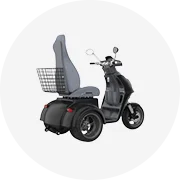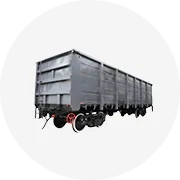Types of Mobility Scooter Roofs
A mobility scooter roof is an essential accessory that enhances user comfort and protection against various environmental elements. These roofs come in different designs tailored to suit specific needs, weather conditions, and personal preferences. Understanding the differences between these types can help users make informed decisions when selecting the most appropriate option for their lifestyle and usage patterns.
Enclosure Roof
The enclosure roof offers comprehensive protection by surrounding the rider on all sides. It typically includes transparent panels or windows, zippable side curtains, and a front windshield made from clear materials like PVC or acrylic.
Advantages
- Full-weather protection including wind, rain, and cold
- Improved privacy for the rider
- Excellent visibility through transparent panels
- Ventilation options via adjustable side panels
Limitations
- Heavier than other roof types
- May reduce maneuverability in tight spaces
- More complex installation process
Best for: Year-round use, colder climates, riders needing full shelter
Canopy Roof
This open-style roof provides basic overhead protection while maintaining an airy feel. Usually constructed with lightweight fabric or mesh material stretched over a supportive frame, it's perfect for fair-weather riding.
Advantages
- Lightweight and easy to install/remove
- Allows for natural airflow and ventilation
- Provides shade from sun exposure
- Inexpensive compared to other options
Limitations
- Limited protection from rain or wind
- Not suitable for harsh weather conditions
- Material may degrade faster from UV exposure
Best for: Warm climates, occasional use, casual riders
Hardtop Roof
Made from durable materials such as fiberglass or reinforced plastic, hardtop roofs offer maximum durability and structural integrity. They are commonly found on heavy-duty or all-terrain scooters designed for rugged environments.
Advantages
- Exceptional durability and longevity
- Complete protection from severe weather
- Enhanced structural stability for the scooter
- Low maintenance once installed
Limitations
- Heavy construction adds weight to the scooter
- Higher cost compared to other roof types
- Permanent or semi-permanent installation
Best for: All-terrain use, permanent outdoor scooters, extreme weather conditions
Folding Roof
The folding roof design allows for compact storage when not in use. Constructed with collapsible frames and flexible fabrics, this type of roof offers convenience without sacrificing functionality.
Advantages
- Space-saving design ideal for storage
- Easy to deploy and retract
- Lightweight construction
- Adaptable to changing weather conditions
Limitations
- Less sturdy than fixed roofs
- May have reduced weather resistance
- Moving parts require periodic maintenance
Best for: Users who need portability and flexibility, urban commuters
Adjustable Roof
Designed with customization in mind, adjustable roofs allow users to modify height, angle, and sometimes even shape according to their comfort and situational needs. Typically made from lightweight aluminum and durable fabric combinations.
Advantages
- Customizable positioning for optimal comfort
- Adaptable to different body sizes and postures
- Can be adjusted for sun/shade control
- Offers versatility across multiple scenarios
Limitations
- Potentially more expensive than standard models
- Requires some technical knowledge to adjust
- Increased complexity may affect reliability
Best for: Riders with specific ergonomic needs, multi-environment use
| Type | Weather Protection | Portability | Comfort | Best Application |
|---|---|---|---|---|
| Enclosure Roof | Excellent | Medium | Good | All-season use, adverse weather conditions |
| Canopy Roof | Fair | Excellent | Excellent | Sunny days, light rain, warm climates |
| Hardtop Roof | Excellent | Poor | Good | All-terrain scooters, permanent outdoor use |
| Folding Roof | Good | Excellent | Good | Urban commuting, variable weather conditions |
| Adjustable Roof | Good | Good | Excellent | Ergonomic needs, personalized fit, diverse usage |
Expert Tip: When choosing a mobility scooter roof, consider your local climate, how frequently you'll use the scooter, and whether you prioritize protection, portability, or comfort. For best results, opt for a removable canopy if you experience seasonal weather changes.
Specifications and Maintenance of Mobility Scooter Roofs
The mobility scooter roof serves as a protective canopy that enhances user comfort and safety in various weather conditions. Understanding its specifications and proper maintenance practices is crucial for long-term performance and usability.
Key Specifications to Consider
Mobility scooter roofs are designed with specific features to suit different models, environments, and user needs. Below are the primary specifications to evaluate when selecting or assessing a roof:
Size and Weight
Mobility scooter roofs come in a range of sizes to accommodate different scooter dimensions. The typical width ranges from 130 cm to 170 cm, while lengths usually fall between 160 cm and 210 cm.
Weight varies depending on material and size, typically ranging from 10 kg to 25 kg or more. Lighter roofs offer better portability and ease of installation, while heavier options may provide enhanced durability and structural integrity.
Construction Materials
Rooftop frames are commonly constructed using materials such as aluminum, steel, or fiberglass. Aluminum offers a lightweight yet sturdy option, ideal for frequent use. Steel provides superior strength but adds more weight. Fiberglass is often used for molded designs that combine lightness with durability.
The outer covering is typically made of vinyl, polycarbonate, or canvas-like fabric, each offering different levels of UV protection, flexibility, and resistance to wear and tear.
Weatherproofing Features
A high-quality mobility scooter roof must be weather-resistant, equipped with seals, gaskets, and reinforced seams to prevent water ingress during heavy rain or snowfall. Some advanced models include integrated drip edges and wind-resistant fastening systems to maintain stability in strong gusts.
UV-protected coatings or tinted windows help reduce glare and heat buildup, enhancing comfort during sunny conditions.
Visibility and Design
Modern mobility scooter roofs often feature transparent or semi-transparent panels and windows made from shatterproof materials like acrylic or polycarbonate. These elements ensure clear visibility without compromising safety.
Tinted windows provide additional sun protection and privacy, making them ideal for outdoor use in urban or sunny climates.
Installation Requirements
Most mobility scooter roofs are engineered for quick and tool-free installation using mounting brackets, clamps, or adjustable straps. A standard installation can typically be completed within an hour, even by users with minimal mechanical experience.
Universal-fit models are available, but vehicle-specific designs ensure optimal fitment and aerodynamic performance, minimizing vibration and noise during travel.
Security Features
Some premium mobility scooter roofs incorporate security enhancements such as lockable side curtains, anti-theft mounting hardware, or integrated alarm systems. These features protect both the scooter and any personal belongings stored underneath the roof.
Reinforced locking mechanisms also deter unauthorized removal of the roof itself, especially in public or shared-use environments.
| Specification | Importance | Selection Tips |
|---|---|---|
| Material Type | High | Choose aluminum or fiberglass for lightweight durability; polycarbonate panels for UV protection and clarity |
| Water Resistance Rating | High | Look for IPX5 rating or higher for reliable protection against heavy rain |
| Mounting Compatibility | Medium-High | Ensure compatibility with your specific scooter model or opt for universal mounts with adjustable brackets |
| Window Clarity | Medium | Opt for scratch-resistant and anti-glare window materials for improved visibility |
Essential Maintenance Practices
To preserve the functionality and appearance of your mobility scooter roof, regular maintenance is essential. Here are key practices to follow:
Important: Never delay repairs on damaged or degraded roofing components. Small issues like minor leaks or slight misalignments can escalate into larger problems affecting the scooter's electrical system, upholstery, or overall safety. Addressing concerns early helps maintain long-term reliability and user satisfaction.
How to Choose Mobility Scooter Roofs
Selecting the right roof for your mobility scooter is essential for comfort, safety, and usability in various environments. A well-chosen roof can protect you from harsh weather while ensuring visibility, durability, and ease of use.
Weather Conditions
The climate where you'll be using your mobility scooter should heavily influence your choice of roof. In areas prone to rain or thunderstorms, a fully waterproof roof with sealed seams and durable material is crucial to keep you dry and comfortable during travel.
- Rainy climates benefit from reinforced PVC or vinyl covers with water-resistant zippers
- Sunny regions may prefer UV-protected materials that block harmful rays without trapping heat
- Cold or windy locations require windproof designs with secure fastening systems
Tip: Consider roofs with removable panels or mesh inserts for versatile weather adaptability
Type of Mobility Scooter
Mobility scooters come in various sizes and configurations, including travel models, full-sized scooters, and three- or four-wheel variants. The roof must match both the physical dimensions of your scooter and its structural design.
- Compact foldable scooters work best with lightweight, modular roofing systems
- Full-size scooters can accommodate larger, more permanent roof structures
- Check mounting points and ensure compatibility with existing frame dimensions
Important: Always verify fitment specifications before purchasing
Portability and Storage
For users who frequently transport their mobility scooter, a roof that's easy to install, remove, and store is vital. Look for designs that feature quick-release mechanisms, folding frames, or compact storage bags.
- Foldable roofs save space when not in use
- Lightweight materials like aluminum frames and polyester fabric reduce overall weight
- Dismantlable components make vehicle transport easier
Storage tip: Measure available storage space before selecting a roof system
Price vs Value
Budget considerations are important, but it’s equally vital to evaluate the long-term value a roof provides. While entry-level options may offer basic protection at lower prices, premium models often include enhanced features that improve safety and longevity.
- Entry-level (under $100): Basic coverage with limited adjustability
- Mid-range ($100-$250): Better materials and additional features
- Premium ($250+): Custom fitments, superior weather resistance, and advanced features
Value insight: Investing in quality can reduce replacement frequency and maintenance needs
Feature Recommendation: When evaluating additional features, prioritize those that directly address your specific needs. For example, if you frequently drive near roadways at night, reflective strips and LED-compatible mounts will significantly enhance visibility and safety. If you're often outdoors on sunny days, UV protection becomes a priority over waterproofing.
| Roof Type | Material | Key Features | Ideal Use Case |
|---|---|---|---|
| Basic Canopy | Water-resistant polyester | Simple installation, budget-friendly | Occasional light rain/sun protection |
| Full Enclosure | Clear vinyl windows, heavy-duty frame | All-weather protection, zippered access | Daily use in variable weather conditions |
| Modular Roof System | Aluminum frame with interchangeable panels | Customizable coverage, easy disassembly | Users needing adaptable protection |
| UV Protection Shade Top | UPF-rated fabric with ventilation | Heat reduction, UV blocking | Primarily sunny climates |
Additional Features to Consider
Modern mobility scooter roofs often come with innovative features designed to enhance user experience and safety. These can make a significant difference depending on how and where you use your scooter.
- Clear vinyl windows for improved visibility and weather protection
- Wind-resistant frames that maintain stability at higher speeds
- Integrated LED lighting mounts for nighttime visibility
- Reflective accents or stripes for increased awareness by others
- Removable side curtains for customizable enclosure levels
Pro tip: Look for roofs with tool-free adjustments for easier customization
DIY Guide to Replacing a Mobility Scooter Roof
Replacing the roof of your mobility scooter is a practical way to refresh its appearance, improve weather protection, or replace a damaged canopy. This guide provides detailed instructions for safely and effectively replacing your mobility scooter's roof as a DIY project.
Safety Reminder: Always ensure the scooter is powered off and securely supported before beginning any work. Use appropriate tools and protective gear such as gloves and safety glasses.
Step-by-Step Replacement Instructions
- Preparation
- Ensure you have the correct replacement roof compatible with your scooter model.
- Gather basic tools such as screwdrivers, wrenches, and possibly zip ties or clamps depending on the design.
- Work in a clean, well-lit area to avoid losing small parts or misalignments.
- Take photos of the existing roof installation for reference during reassembly.
- Removing the Old Roof
- Carefully detach all fasteners (straps, Velcro, screws, or bolts) securing the old roof to the frame.
- If there are electrical components like lights or wiring integrated into the roof, disconnect them carefully.
- Remove the old roof gently without bending or damaging the scooter’s frame or body panels.
- Fitting the New Roof
- Position the new roof over the scooter frame, aligning it with mounting brackets or attachment points.
- Make slight adjustments to ensure even coverage across both sides and proper clearance around handlebars or controls.
- Verify that the roof does not obstruct any switches, indicators, or moving parts.
- Securing the Roof
- Begin fastening the roof using provided straps, Velcro strips, or hardware according to the manufacturer's instructions.
- If the roof includes additional supports or tensioners, install these to maintain stability in windy conditions.
- Tighten all fasteners evenly to prevent sagging or uneven pressure on the frame.
- Final Inspection
- Double-check all connection points to confirm the roof is secure and stable.
- Ensure there are no gaps or flaps that could catch wind or allow water ingress.
- Reconnect any electrical accessories and test their functionality if applicable.
| Installation Phase | Key Actions | Potential Issues | Recommended Tools |
|---|---|---|---|
| Preparation | Select correct roof model, gather tools, document current setup | Incompatible roof, missing tools, lack of reference images | Camera, screwdriver set, pliers |
| Roof Removal | Disconnect fasteners, remove old roof safely | Damaged frame, broken clips, tangled wires | Wire cutters, Allen keys, lubricant spray |
| Installation | Align new roof, secure with provided fasteners | Misalignment, improper tension, poor fit | Ruler/level, zip ties, torque screwdriver |
| Testing | Check stability, test electronics, verify weatherproofing | Leakage, loose connections, rattling | Water spray bottle, multimeter, flashlight |
Pro Tip: If your mobility scooter has a folding roof mechanism, inspect hinges and locking pins during installation. Lubricating moving parts can help extend the life of the new roof structure and ensure smooth operation.
Post-Installation Recommendations
After installing the new roof, perform a short test drive in a safe area to ensure the roof remains secure under movement and various weather conditions. Check periodically for any loosened fasteners or wear spots.
For more complex installations involving electrical systems or custom frames, refer to the official user manual or contact an authorized dealer for assistance. Regular maintenance will help keep your scooter protected and looking great year-round.
Frequently Asked Questions About Mobility Scooter Roofs
Mobility scooter roofs are designed to provide protection from the elements while maintaining portability and ease of use. These roofs attach directly to the scooter frame using support poles or a collapsible framework, typically positioned above the user's seat area. The structure functions similarly to a canopy or awning, shielding the rider from sun exposure, light rain, and wind without fully enclosing the scooter. Most designs allow for unobstructed visibility and freedom of movement while offering weather protection.
Modern mobility scooter roofs are constructed using a combination of lightweight yet durable materials:
- Frame Materials: Aluminum is the most common choice due to its strength-to-weight ratio, corrosion resistance, and flexibility in design. Some models may also use reinforced steel or high-impact plastic components for added stability.
- Cover Materials: Polyester fabric is widely used because of its water-resistant properties, UV protection, and durability. Premium covers may feature laminated coatings (like PVC or polyurethane) for enhanced waterproofing and longevity.
This material pairing ensures that the roof remains both sturdy and lightweight, contributing to the overall maneuverability and transportability of the scooter.
Yes, mobility scooter roofs are specifically engineered for easy installation and removal. Most models come with:
- Quick-connect mounting brackets
- Tool-free attachment systems
- Foldable or detachable frames
Users can typically install or remove the roof in under 10 minutes without requiring professional assistance. This modularity allows users to customize their scooter based on weather conditions or personal preference. Additionally, many roofs are designed to be adjustable, enabling tilt or height modifications for optimal coverage and comfort.
































































